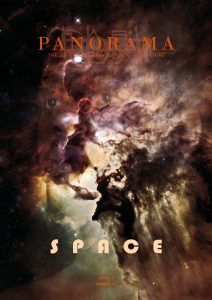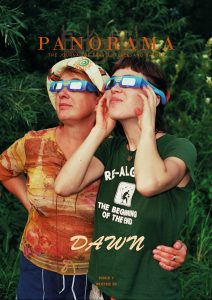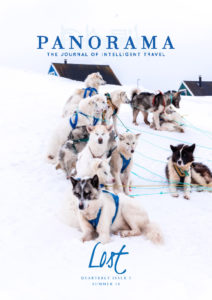There are some journeys that stay with you. They don’t need to be epic Himalayan treks or rainforest expeditions. I was 10 or 11 when I took my brother’s old bike, a decrepit racer with a worrying squeak, and set off to cross Chat Moss alone. It was the first time I can remember leaving the familiar landscape of home and school behind me for no other reason than to see what lay beyond it. The landscape of my childhood wasn’t pretty, but it had a strange, slightly menacing beauty.
The Moss is 7,000 years old and deep. A huge expanse of black earth, it spreads westward from the fringes of Salford. In 1720 Daniel Defoe, on his travels around Britain, described it:
“On the road to Manchester, we passed the great bog or waste called Chatmos, […] The surface, at a distance, looks black and dirty, and is indeed frightful to think of, for it will bear neither horse or man, unless in an exceedingly dry season, and then not so as to be passable, […] What nature meant by such a useless production, ‘tis hard to imagine; but the land is entirely waste, except for the poor cottager’s fuel, and the quantity used for that is very small.”
It has changed since then, of course. One way or another every generation that’s inhabited it have been diggers: digging peat, digging ditches to drain the marsh, digging the heavy soil in the fields they made there, digging in the mines beneath the farms. All that struggling leaves something behind; traces of people left in the landscape.
Since 1761 the northern edge of The Moss has been drawn by the raised line of the Bridgewater Canal. Entirely man-made, it is widely considered to be Britain’s first ‘true’ canal. On each bank is a broad tow path made from compacted ash and slag. In all but the driest weather these cinders formed a drab, sticky mud. Between the two strips of grey the water was, and probably still is, stained a bright orange by traces of iron seeping from the ground beneath. The contrast of grey and orange, especially on a sunny day, was vivid and beautiful.
As a boy, what I really loved about this stretch of the canal was the ghost that patrolled its banks. The Grey Lady was famous locally. Witnesses frequently reported that she appeared to be searching for something. The wandering sprit was said to be that of Ann Mort, the daughter of a protestant family, who fell in love with a Catholic boy, James Speakman. When Anne’s father paid the Speakman family to leave the district, she died of a broken heart. Her ghost is still looking for James in the fields where they used to meet.
The story is a reminder of the religious divisions that once split the area. Ever since I heard this and other similar local legends, I’ve been fascinated by the stories — mixtures of myth and history — that cling to landscapes. Maybe because of this, I’ve always been a ghost hunter — not the kind that run around stately homes with infra-red cameras and tape recorders — I mean that I’ve always sought out the stories that haunt a place. I’m drawn to the scars and the sites to which people attached significance and then forget.
The area I grew up in was replete with places like that: layers of history sinking out of view. On Chat Moss it sometimes feels that everything sinks, if you leave it long enough. To either side of the canal, the land had sunk away. Mining subsidence I was always told. In some areas this allowed a shallow lake to form, known locally as a ‘flash’. Because of these flashes, the area attracts birds; herons and lapwings, graceful, delicate and utterly alien amidst the melancholic drabness around them.
Next to the canal, the headgear of Astley Green Colliery towers above the flat land around it. A wrought iron lattice of girders with a pair of huge wheels mounted at the top, it stands above a shaft that was sunk in 1908 to dig through Triassic rocks and a hundred metres of clay, sand, and gravel to get to coal that was laid down 300 million years ago.
The town used to be surrounded by pits. The last one closed the year I was born and, with the exception of what is now a mining museum, all the buildings have gone. The slag heaps have been landscaped into green hills covered in young trees and tough grasses that don’t mind the acidic soil; cotton grass and purple moor grass. But when we were kids it was an alien wasteland of piled slag and old workings that sat rotting at this industrialised edge of The Moss.
The empty works and capped shafts lay unloved and abandoned throughout my early childhood. Beneath them, nearly a kilometre below the wet, heavy land, the tunnels of the mines are still there, filled with black water and rubble. We used to tell each other hopelessly exaggerated stories about the mines, based on scraps of truth we’d heard about the tunnels that stretched for countless miles and mining accidents. There were plenty of accidents in the pits, mostly caused by explosions of firedamp.
The word ‘firedamp’ always fascinated me. It evoked something that was at once dangerous and dismal. Something malevolent that lurked below ground waiting to trap the unwary either burning them up like coal or dragging them into a clammy misery from which they would never return. The idea of all of those tomb-like passageways was just as fascinating and terrifying to me as the possibility of coming face to face with Anne Mort’s spectre.
Leaving the mines behind me, I crossed the canal by the wrought iron humpback bridge. Even on my crumby old bike it was possible to reach a good speed going down its long slope, free-wheeling through the outlying buildings of the village. The Methodist chapel and the scattering of small houses would have passed in a blur of dirty red brick, and finally I would have flown along the high fence of the timber yard with its sweet smell of wet sawdust. Soon I would have been out on The Moss, alone, with only the black windows of isolated farmhouses looking back at me and unseen dogs barking from dilapidated barns. Unbroken by the hedges and walls that usually intersect farmland, the moss has a distinctively empty character.
The narrow concrete road heads south in a more or less a straight line at first, but makes sudden doglegs to allow for the sheer-sided drainage ditches that criss-cross the landscape of dark fields. The changes in direction and dead-end tracks can be disorientating. The deep-cut channels are evidence of the two hundred years of work that has gone into draining the land.
There are historical accounts of the peat bogs bursting their boundaries after heavy rain, fouling the rivers and corrupting the surrounding lands with “stinkinge waters and mosse”. With the rising population of the newly industrialised north, nature, it was decided, had to be tamed, and the reclamation of The Moss was done on an industrial scale. Clay, lime and silt were dumped onto the land and sewage was spread to fertilise it. Farmers were forced, by the corporation of the rapidly expanding city of Manchester, to accept a specified amount of “night soil” on their land.
Instead of constructing roads for access, a movable light railway was deployed on The Moss and because of this much of it has remained inaccessible by car. Even after all of the reclamation work, parts of the area remain remote and bleak. Being within sight of the city seems to exaggerate the extraordinary isolation you feel on The Moss. The only sense of distance comes from the perspectives drawn by straight concrete access roads and drainage ditches.
Roughly half way across, it’s bisected by tracks of the Liverpool and Manchester Railway. The entire landscape of my childhood had looked in the other direction, north towards town, and out here the railway’s raised embankment felt like a frontier with the rest of the world. The level crossing where the narrow road leapt the rails was like a border crossing in some old spy film. Beside the crossing stood Astley Station. It closed a generation before I made my meandering way there that day. Once a stop on the world’s first steam powered passenger railway, the disused platform still sits next to a remote signal box.
George Stephenson built the railway, but even an engineer of his stature was nearly defeated by the geography of Chat Moss. The depth of the bog made it impossible to provide a stable foundation for the lines. His solution was to float the line on a raft of bound branches covered with tar and ballast. I remember being told that the tracks were built on cotton bales. Perhaps it had been intended as a metaphorical comment about how the construction of the line was financed.
The first train ran through Chat Moss in 1830 and the line is still in use today. On later visits with friends we would hide our bikes in the trees and stand on the flat land beside the embankments, waiting for trains to pass. The ground would move, but not with the vibration you feel when a train passes on normal tracks – the earth would quiver as though it might open up and slurp down everything around us into the soggy underworld where the Firedamp and Ann Mort’s ghost were waiting.
Beyond the frontier of the railway, the far-flung territories of The Moss used to stretch to the river Irwell. More recently its boundary has been re-drawn by the M62 motorway which curves along The Moss’s southern border to Worsley where, in 1958, the severed head of a man was found. At first it was thought that he was a murder victim (not an unreasonable assumption for a desolate area on the fringe of a big city) but he turned out to be a lot older than anyone had expected. Worsley Man, as he became known, was in his twenties at the time of his death, which was around 120 AD. Recent work by University of Manchester has shown that like many of the bog bodies of northern Europe, he was the victim ritual sacrifice. He had been preserved under layers of peat for almost 2,000 years.
It’s only a few miles across The Moss. I emerged from its gloom and its soup of history into sudden modernity: the roar of the motorway, electricity pylons carrying cables into Manchester, light aircraft landing and taking off at Barton Aerodrome. All of these things seemed to be drawing lines that lead to other places; escape routes perhaps. But they would have to wait for another day. On that first solo mission across The Moss I had forgotten the time, as kids do. By the time I began to pedal my squeaking way home on the old bike it was beginning to go dark. As I turned for home, the wind blowing through pylons was making a single note that rose and fell. The stunted trees along the road’s edge, their roots in the black ditch water, seemed to be more animated in the deepening shadows of late afternoon. I put my head down and pedalled that bike faster than it had ever gone.
I barely recognised the place when I went back 25 years later. Time moves on. Commercial peat extraction has ceased, and some areas are being allowed to turn back to wet moss land. It’s prime farm land now and cereal crops have replaced the root vegetables that used to be grown there. It is deceptively genteel now, but when the weather closes in there is still something of the atmosphere I remember from my childhood.
Landscapes, especially those we are first exposed to, shape us. They are part of us as much as we are part of them. To me, The Moss was always a patchwork of legends; bog men, ghosts, flooded mines and long empty roads, but there was always something beautiful in the gloom. It was a place that seemed soaked in an age-old loneliness overflown by hen harriers and herons. A place where earth and water became almost a single element and the ground was always moving, never quite to be trusted.











